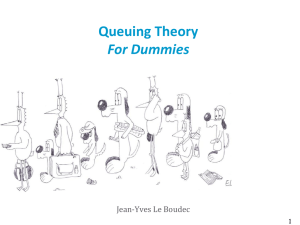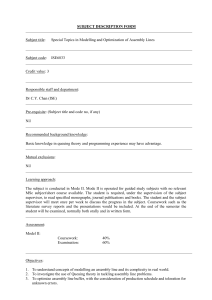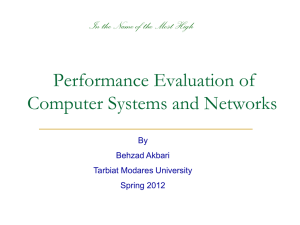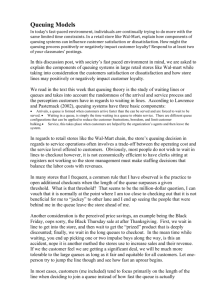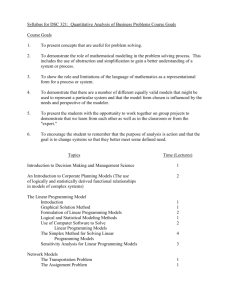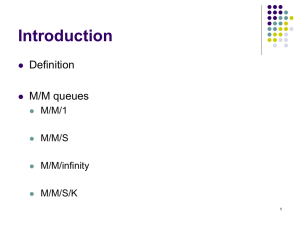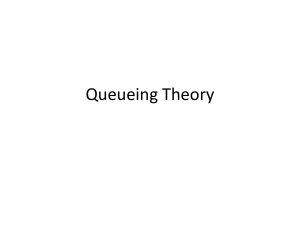Queuing Theory Sample Problems: M/M/1, M/M/2 Models
advertisement
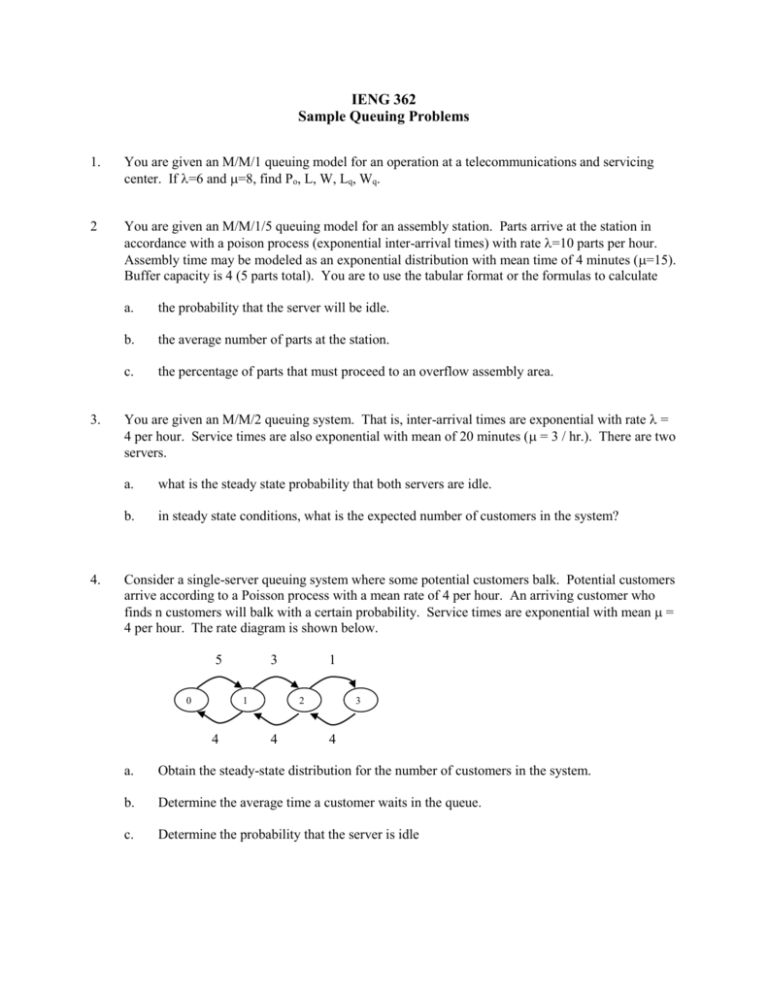
IENG 362 Sample Queuing Problems 1. You are given an M/M/1 queuing model for an operation at a telecommunications and servicing center. If =6 and =8, find Po, L, W, Lq, Wq. 2 You are given an M/M/1/5 queuing model for an assembly station. Parts arrive at the station in accordance with a poison process (exponential inter-arrival times) with rate =10 parts per hour. Assembly time may be modeled as an exponential distribution with mean time of 4 minutes (=15). Buffer capacity is 4 (5 parts total). You are to use the tabular format or the formulas to calculate 3. 4. a. the probability that the server will be idle. b. the average number of parts at the station. c. the percentage of parts that must proceed to an overflow assembly area. You are given an M/M/2 queuing system. That is, inter-arrival times are exponential with rate = 4 per hour. Service times are also exponential with mean of 20 minutes ( = 3 / hr.). There are two servers. a. what is the steady state probability that both servers are idle. b. in steady state conditions, what is the expected number of customers in the system? Consider a single-server queuing system where some potential customers balk. Potential customers arrive according to a Poisson process with a mean rate of 4 per hour. An arriving customer who finds n customers will balk with a certain probability. Service times are exponential with mean = 4 per hour. The rate diagram is shown below. 5 0 3 1 4 1 2 4 3 4 a. Obtain the steady-state distribution for the number of customers in the system. b. Determine the average time a customer waits in the queue. c. Determine the probability that the server is idle 5. You are asked to evaluate a queuing system. After some analysis, you determine that the system can be modeled as an M/M/1 queue with = 3 and = 4. You are to determine the expected waiting time cost per unit time E[WC] for this system when the waiting-cost function has the form h(W) = 10W. 6. Parts arrive at a processing center which can service one part at time with a buffer capacity of 3 units. Management is considering one of two machines to service parts. Machine 1 has daily operating costs of $160. Machine 2 has larger daily costs of $220 but can service parts faster. The g(N) form is used to compute waiting time costs for the parts and is given by g(N) = 100N for n greater than 1. You are given the following table showing costs, and steady state probabilities for Machines 1 and 2 respectively. Compute the better alternative between the two machines. n g(n) M1 Pn 0 1 2 3 4 0 0 100 200 300 0.30 0.25 0.19 0.15 0.11 M2 Pn 0.39 0.29 0.17 0.10 0.06
